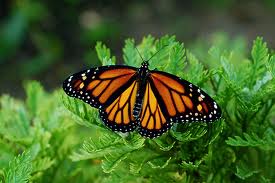January Gardening
There has been a lot of interest and feed back in regards to the recent article about the use of aspirin as a garden spray to assist plants in protecting themselves against diseases and pest insects. The first thing to understand is that any spray of aspirin, is not likely to cure any problem you may have. The ingredients of the aspirin kick in the defence mechanism of a plant making it ready to withstand an attack.
 What normally would occur in a plant that is growing naturally (organically) the plant is putting half of its resources into growing and the other half into protection. If a plant is feed man made fertilisers the plant is forced into growing and has little or no resources for protection. This makes the plant vulnerable and in a stress situation, diseases and pests take notice of this and attack the plant. That is why commercial growers and gardeners that are tossing in quantities of manmade fertilisers are also spraying a lot of chemicals to protect the crops.
What normally would occur in a plant that is growing naturally (organically) the plant is putting half of its resources into growing and the other half into protection. If a plant is feed man made fertilisers the plant is forced into growing and has little or no resources for protection. This makes the plant vulnerable and in a stress situation, diseases and pests take notice of this and attack the plant. That is why commercial growers and gardeners that are tossing in quantities of manmade fertilisers are also spraying a lot of chemicals to protect the crops.
There is also some thought that plants in this unnatural state come to realise and rely on their two legged guardians to protect them and just put all their efforts into growing. I would surmise that plants in this state would switch some of their resources into protection mode if sprayed with the aspirin solution. Plants growing naturally, as they should do, would increase their protection and grow a little slower when treated with the aspirin spray.
The email information that I used in the article stated 81 gr of aspirin in 9 litres of water which would be a mistake and should be milligrams. Dependant on brand name the milligram rate varies from 100 to 500 with 300 being very common. Thus a third of a 300 mg Disprin would be about right. It is not going to hurt giving a bit higher a dose but may slow down normal growth a bit more for a while. The spray is not going to solve a problem you already have but may help prevent problems from happening or reduce the damage they cause.
A few readers have contacted me recently in regards to Monarch butterfly caterpillars and running out of foliage on their swan plants to feed them to keep them alive. The best place for answers about monarch butterflies in New Zealand comes from the Monarch Butterfly NZ Trust found at www.monarch.org.nz. On their site they answer the question with the following information:
In NZ the natural food species of the Monarch (Danaus plexippus) larvae is the Asclepiadiae family milkweed which includes swan plant (Gomphocarpus fruticosus) and giant swan plant (G. physocarpus) as well as Asclepias species such as tropical milkweed/bloodflower (A. curassavica). The tropical milkweed comes in two colours -scarlet (which has a gold centre) and gold (all yellow).

The term ‘milkweed’ can be confusing but a Fact Sheet on this is available. The Monarch Butterfly NZ Trust will be able to help you with seed of the giant swan plant and tropical milkweed, each packet is $5.
Larvae in their latter stages can be also fed on a noxious weed which is sometimes called moth vine, cruel vine or kapok plant (Araujia sericifera) as well as cucumber, pumpkin and courgette but only when they are ten days old or more than 2cm in length. This weed is on the banned list in some regions check with your regional council.
Adult butterflies will feed on any plant giving nectar. They usually choose flowers with bright colours, purples, pinks and blues. Hebes are very popular.
When there are too many caterpillars on a swan plant they eat themselves out of house and home and once all the foliage has gone, often the plant will die. To prevent this you should place a clear plastic bag over a piece of one branch that has a number of leaves on it. Tie the bag on securely and punch a number of small holes in the bag so the foliage can breathe. This prevents the caterpillars from eating all the foliage and saves the plant.
If you are running low of swan plant food best you visit a garden centre for more plants.
Protect part of the foliage as suggested. Another question is often asked and that is how to protect the caterpillars from the wasps that lay their eggs on the caterpillars and the maggots eat the caterpillars causing them to die.
The Monarch Trust suggests the following: You can grow your plants in pots, and move them to where the wasps can’t find the plants or grow them under cover, such as a mosquito net. Cover the plant when you have seen a female Monarch laying plenty of eggs. Then you can watch your caterpillars grow.
Check out their web site and find out lots of other interesting information such as how to tell a male butterfly from a female.
Newer gardeners may not know the advantages of what is called ‘Dead Heading’ which does not mean a non-thinking person, though it could apply to a few. It means removing the spent flowers off a plant which prevents the plant from forming a seed pod. With plants that we grow for their flowering beauty such as roses we want lots of flowers, not lots of seed pods.
It is very simple, either with your fingers or a pair of clippers, you go around and nip off any dead or dying flowers. This encourages the plant to flower again as its purpose is to produce seeds and new plants. With roses that are two or more years older you can prune back down the stem a little way and this will encourage new growths and likely more flowering, if it is a rose that repeats during a season and not a oncer.
Insect control is very important at this time of the year as there are masses of insects around that can harm plants during these summer months. The safe way is to use Neem Tree Oil and Key Pyrethrum sprayed late in the day just before sunset. If you do not want to harm beneficial insects that eat pest insects then do not use the pyrethrum, just the Neem Oil.
I notice on my plants a number of spiders and lots of webs (not the webs of spider mites) and that reminds me about how the spiders control lots of pest insects. So look after the spiders and don’t kill them with Pyrethrum. Some insects we may like to have in our gardens even though they eat the foliage of some plants such as the previously mentioned Monarch Butterfly caterpillars and another is stick insects. The endemic to NZ, Red Admiral Butterfly is one that you should look after also and allow a patch of stinging nettle to grow somewhere on your property because it is the food for the caterpillars.
Happy Gardening.


Hi Wally, Are you the same Wally that supplies neem oil/granules to places like Bunnings? If so I want to shaer a neat farming success with neem. It has more uses than you might expect…